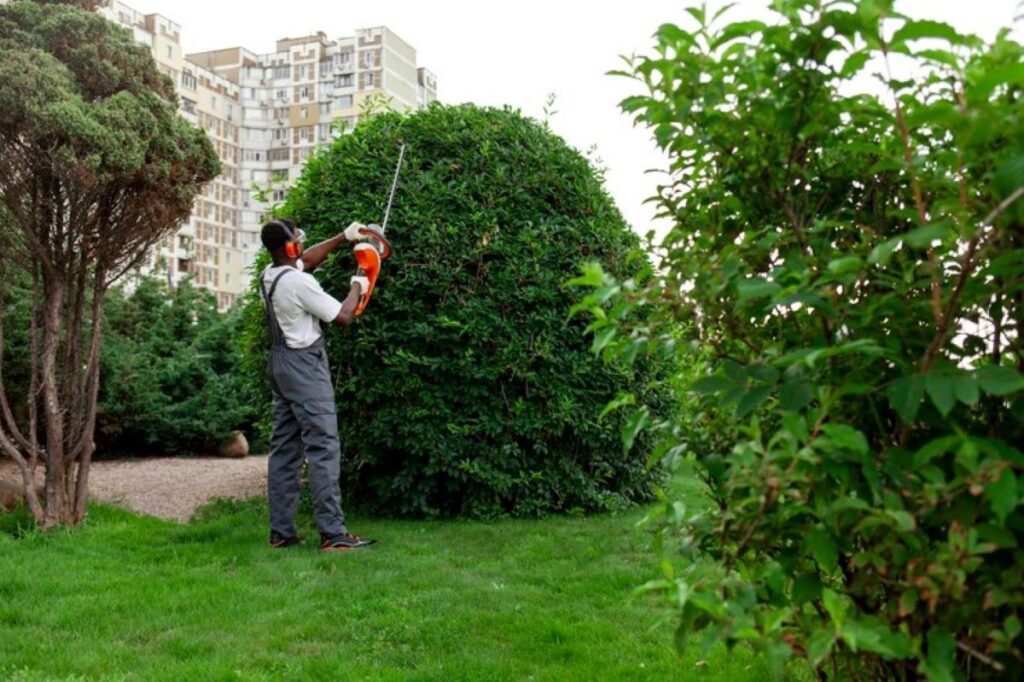Maintaining hedges is an essential aspect of garden care that can significantly enhance the aesthetic appeal of any outdoor space. In Sydney, where the climate can vary from humid subtropical to temperate, understanding the specific needs of your hedges is crucial for their health and longevity. This article presents expert advice from some of Sydney’s top arborists, providing valuable insights into effective hedge maintenance.
Understanding Your Hedges
Before diving into maintenance techniques, it is vital to understand the types of hedges commonly found in Sydney gardens. Hedges can be broadly classified into two categories: formal and informal. Formal hedges are typically trimmed into neat shapes, while informal hedges are allowed to grow more naturally. This distinction not only influences the aesthetic appeal of your garden but also affects how much time and effort you will need to invest in their upkeep.
Types of Hedges
Common varieties include Boxwood, Lilly Pilly, and Photinia, each with its unique growth habits and maintenance requirements. For instance, Boxwood thrives in well-drained soil and requires regular trimming to maintain its shape, whereas Lilly Pilly can grow quite tall and may need less frequent pruning. Additionally, Photinia is known for its vibrant red new growth, which can add a splash of colour to your garden. Understanding these characteristics will enable you to choose the right hedge for your specific needs, whether you are looking for privacy, wind protection, or simply an attractive garden feature.
Climate Considerations
The subtropical climate of Sydney means that hedges can grow rapidly during the warmer months. This growth pattern necessitates a proactive approach to maintenance, ensuring that hedges do not become overgrown or unruly. Understanding the seasonal growth cycles of your hedges can help in planning effective maintenance schedules. For example, late winter to early spring is often the best time to prune many varieties, as this encourages healthy new growth just as the weather warms up. Furthermore, being aware of local pests and diseases that can affect hedges, such as scale insects or fungal infections, is crucial for maintaining their health and vitality throughout the year.
Moreover, the choice of mulch and fertiliser can significantly impact the growth and appearance of your hedges. Organic mulches, such as wood chips or straw, not only suppress weeds but also improve soil quality as they decompose. Similarly, a balanced fertiliser can provide essential nutrients, promoting lush foliage and robust growth. It is also worth noting that regular watering, particularly during dry spells, can make a substantial difference in the health of your hedges, ensuring they remain vibrant and lush throughout the year.
Essential Hedge Maintenance Practices
Regular maintenance is key to keeping hedges healthy and attractive. Below are some essential practices recommended by arborists in Sydney.
Pruning Techniques
Pruning is perhaps the most critical aspect of hedge maintenance. It not only shapes the hedge but also encourages healthy growth. The best time to prune most hedges is during the late spring or early summer, just after the main growth period. This timing allows for the removal of dead or diseased wood while promoting new growth.
When pruning, it is essential to use sharp, clean tools to make precise cuts. This practice minimises damage to the plant and helps prevent the spread of disease. Arborists recommend cutting at a slight angle to allow water to run off, reducing the risk of rot. Additionally, it is beneficial to step back periodically while pruning to ensure the hedge maintains its desired shape and density. This not only enhances the aesthetic appeal but also ensures that light can penetrate the foliage, promoting even growth throughout the plant.
Watering and Fertilisation
Proper watering and fertilisation are crucial for the health of hedges. During dry spells, hedges may require additional watering to prevent stress. Deep watering is preferable, as it encourages roots to grow deeper into the soil, making the plants more resilient.
Fertilisation should be tailored to the specific needs of the hedge species. A balanced fertiliser applied in early spring can provide the necessary nutrients for healthy growth. However, over-fertilising can lead to excessive growth and make hedges more susceptible to pests and diseases. It is also worth noting that organic fertilisers, such as compost or well-rotted manure, can improve soil structure and enhance nutrient availability, promoting a more robust and sustainable hedge. Regular soil testing can help determine the nutrient levels and pH, allowing for more precise adjustments to fertilisation practices, ensuring that the hedges thrive in their environment.
Pest and Disease Management
Hedges can be susceptible to various pests and diseases, which can compromise their health and appearance. Identifying and managing these issues early is crucial for maintaining hedge vitality.
Common Pests
Some of the most common pests affecting hedges in Sydney include aphids, scale insects, and spider mites. Regular inspections can help detect these pests before they become a significant problem. If an infestation is detected, organic insecticides or horticultural oils can be effective in managing the issue.
Disease Prevention
Diseases such as powdery mildew and root rot can also affect hedges. Ensuring good air circulation and avoiding overcrowding can help prevent fungal diseases. Additionally, maintaining proper watering practices can reduce the risk of root rot, as overly saturated soil can lead to decay.

Seasonal Hedge Care Tips
Seasonal changes bring different challenges and opportunities for hedge maintenance. Understanding these seasonal requirements can help gardeners keep their hedges looking their best throughout the year.
Spring Care
Spring is the ideal time to assess the health of hedges and perform any necessary pruning. As new growth begins, removing dead or damaged branches can promote a fuller, healthier hedge. This is also the time to apply fertiliser to encourage robust growth during the active growing season.
Summer Maintenance
During the summer months, regular watering becomes essential, especially during prolonged dry spells. Mulching around the base of hedges can help retain moisture and regulate soil temperature. Additionally, monitoring for pests is crucial, as warmer weather can lead to increased pest activity.
Autumn Preparations
As the weather cools in autumn, it is important to prepare hedges for the upcoming winter months. This may involve a final pruning to tidy up the shape and remove any dead wood. Applying a layer of mulch can also provide insulation for roots during colder months. Click here to get more about
Tools and Equipment for Hedge Maintenance
Having the right tools can make hedge maintenance more efficient and effective. Below are some essential tools recommended by arborists.
Pruning Shears and Loppers
Sharp pruning shears are essential for making clean cuts on smaller branches, while loppers are ideal for thicker branches that require more leverage. Investing in high-quality tools can make a significant difference in the ease of maintenance tasks.
Hedge Trimmers
For larger hedges, powered hedge trimmers can save time and effort. These tools come in various sizes and styles, including electric and petrol-powered options. However, care should be taken to avoid cutting too much at once, as this can stress the plant.
Professional Hedge Services
While many homeowners can manage hedge maintenance themselves, there are times when professional help is beneficial. Hiring a qualified arborist can ensure that hedges are maintained to the highest standard.
When to Hire an Arborist
Engaging the services of a professional arborist is advisable when dealing with large or overgrown hedges, or when pests and diseases are beyond manageable levels. Arborists possess the expertise and equipment necessary to handle complex hedge maintenance tasks safely and effectively.
Benefits of Professional Care
Professional arborists not only provide pruning and pest management services but can also offer valuable advice on hedge selection and placement. Their knowledge of local conditions can help ensure that hedges thrive in the specific environment of Sydney.

Conclusion
Maintaining hedges is a rewarding endeavour that enhances the beauty of any garden. By understanding the specific needs of different hedge types and implementing effective maintenance practices, gardeners can ensure their hedges remain healthy and vibrant. Whether through regular pruning, proper watering, or seeking professional assistance, the tips provided by Sydney’s top arborists can guide homeowners in achieving stunning hedge displays.
With the right care, hedges can flourish, providing not only privacy and structure to a garden but also a habitat for local wildlife. Embracing these maintenance tips will lead to lush, thriving hedges that contribute to the overall beauty of Sydney’s gardens.